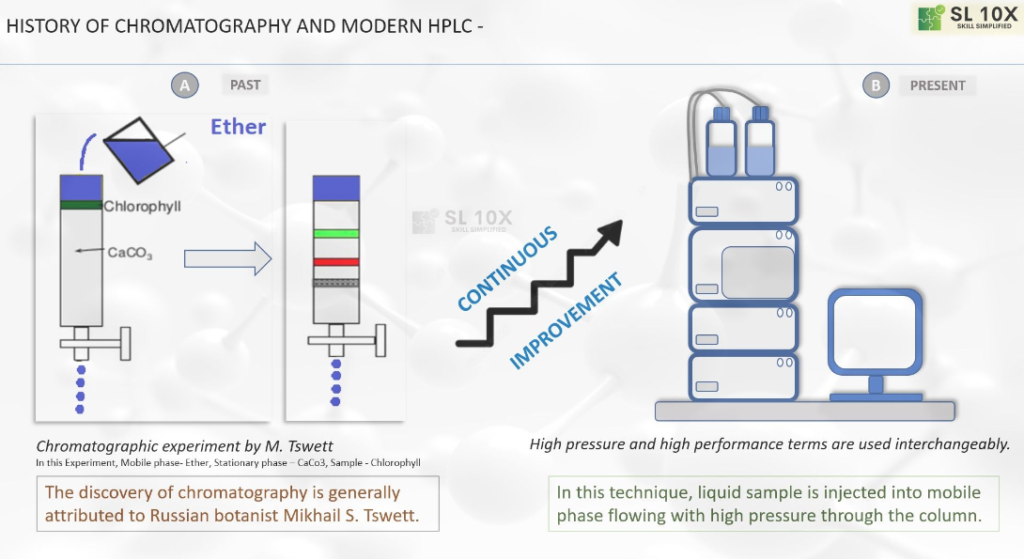History of Chromatography and Modern HPLC
- sl10x.in
- June 23, 2024
- No Comments
- 10:59 am

The discovery of chromatography is generally attributed to the Russian botanist Mikhail S. Tsvet (also spelled Tswett). In 1901, he recognized the physicochemical basis of the separation and applied it in a rational and organized way to the separation of plant pigments, particularly the carotenoids and the chlorophylls. Section A of the figure represents the basic setup of the experiment which was performed by Tsvet. He packed a vertical glass column with an adsorptive material, such as alumina, or silica, and added a solution of the plant pigments to the top of the column and washed the pigments through the column with an organic solvent. The pigments are separated into a series of discrete coloured bands on the column, divided by regions entirely free of pigments. Because there were colours in band hence, he called this method of separation as chromatography (from Greek words meaning colour writing). From here onwards the new revolutionary separation science named chromatography was started. Section B of the figure represents HPLC which is being used these days. This kind of sophistication in the HPLC instrument was reached after many iterations and continuous improvement.
sl10x.in
Category Post
Newsletter
Elit tellus, luctus nec ullamcorper mattis, pulvinar dapibus leo.
